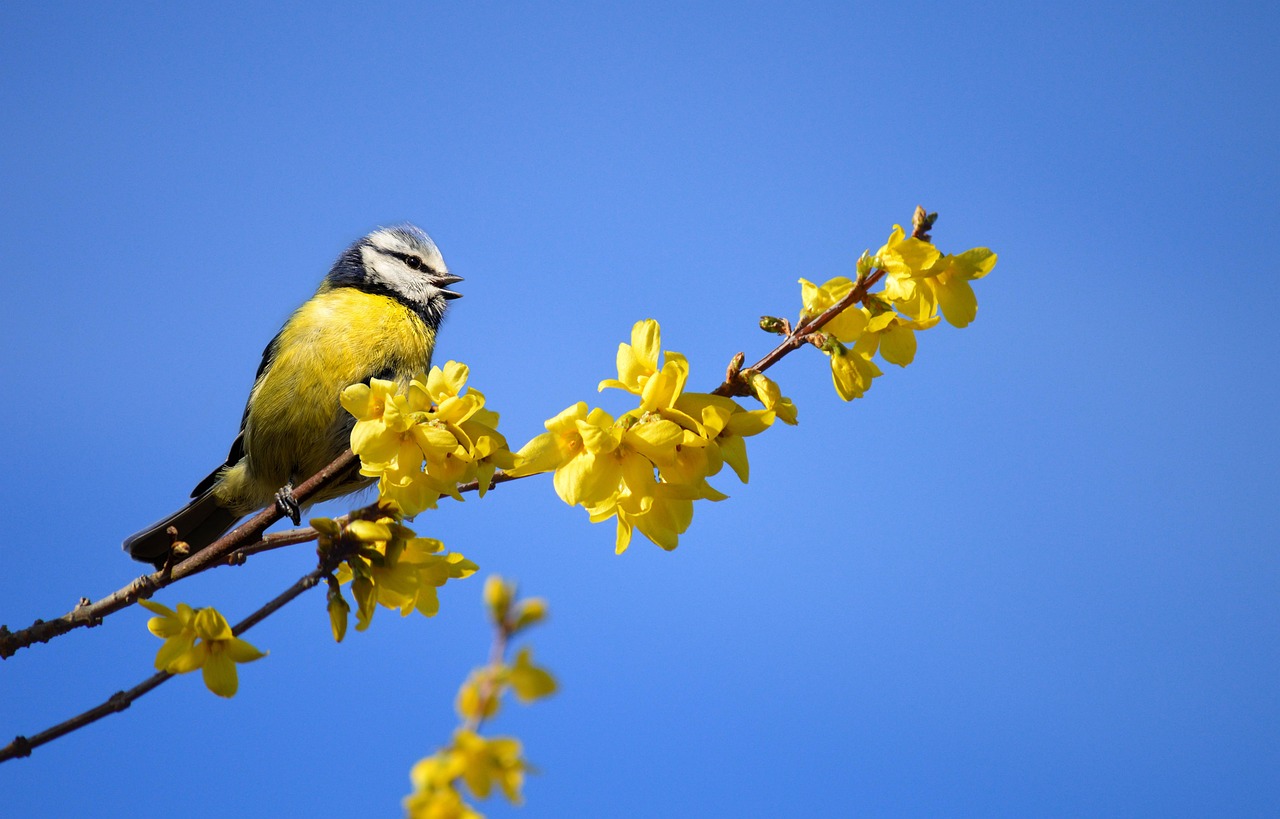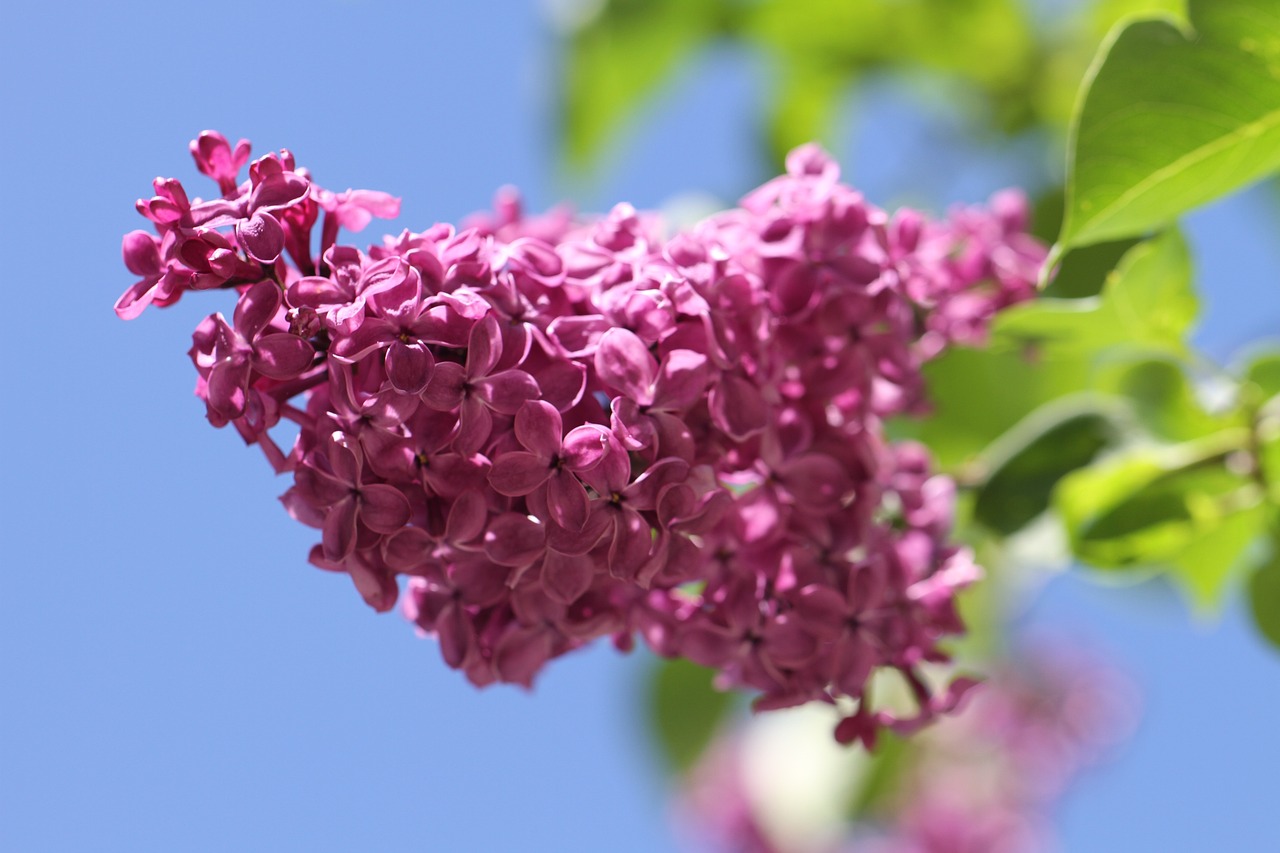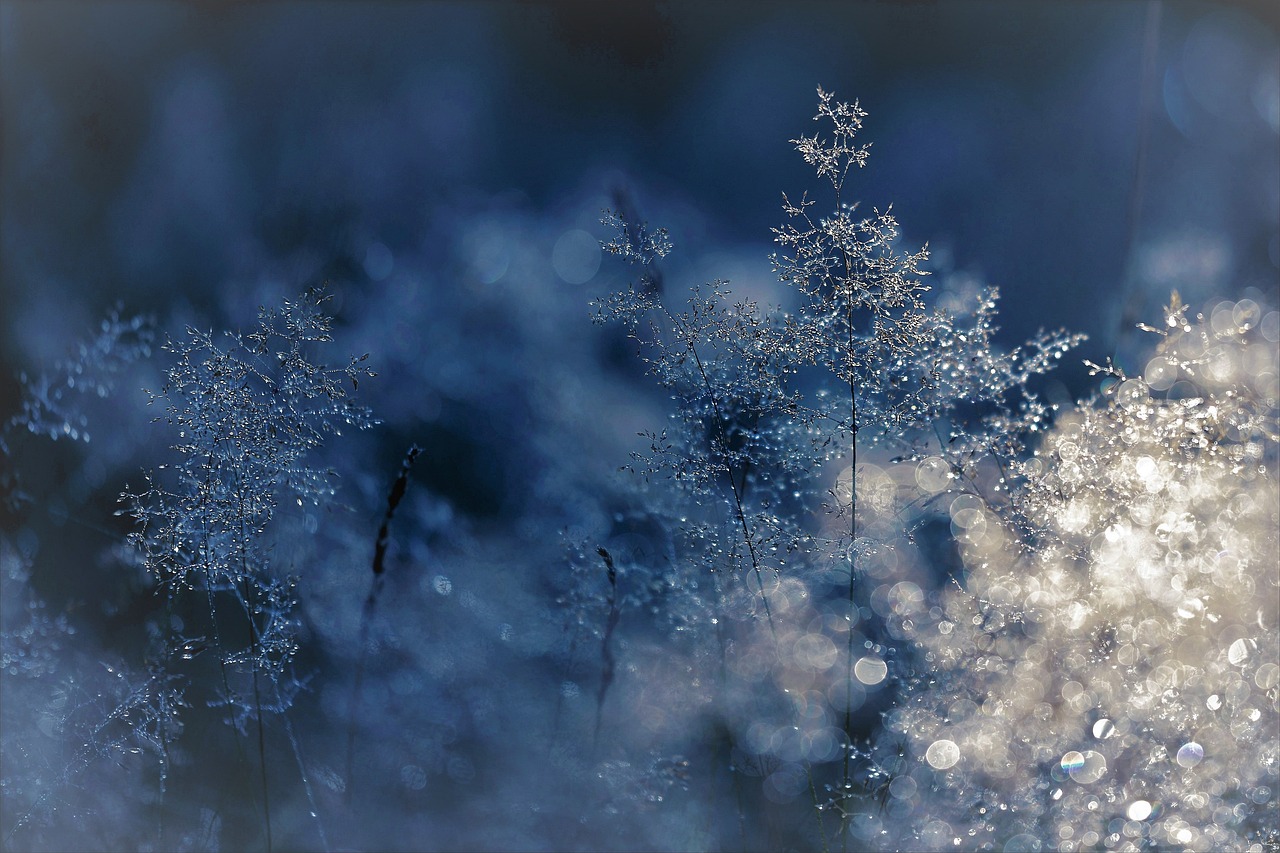Blue flowering shrubs are a rare and stunning addition to any garden. Their vibrant blue hues can create a unique focal point, attracting attention and admiration. These plants not only offer beauty but also bring a sense of tranquility and freshness to outdoor spaces.
When it comes to landscaping, color plays a crucial role in the overall aesthetic. While many plants bloom in shades of pink, red, and yellow, blue flowering shrubs stand out for their rarity. Blue is often associated with calmness and serenity, making these shrubs a perfect choice for creating peaceful garden retreats.

In addition to their visual appeal, blue flowering shrubs can also contribute to biodiversity. Many of these plants attract pollinators such as bees and butterflies, supporting the local ecosystem. This characteristic makes them not just beautiful, but also beneficial for the environment.
Types of Blue Flowering Shrubs
There are several varieties of blue flowering shrubs to consider for your garden. Each has its unique features and care requirements. Below is a list of some popular options:
- Caryopteris x clandonensis (Blue Mist Spiraea) – A compact shrub with fragrant blue flowers that bloom in late summer.
- Hydrangea macrophylla (Bigleaf Hydrangea) – Depending on soil pH, these can produce blue flowers, especially in acidic conditions.
- Ceanothus (California Lilac) – Known for its vibrant blue clusters, this shrub thrives in sunny environments.
- Vaccinium corymbosum (Highbush Blueberry) – Not only does this shrub bear blue flowers, but it also produces delicious blueberries.
Choosing the right blue flowering shrub for your garden will depend on your local climate, soil type, and the desired size of the plant. Understanding these factors can help you make an informed decision that will ensure your garden flourishes.
Growing Conditions for Blue Flowering Shrubs
To successfully grow blue flowering shrubs, it is essential to provide them with the right conditions. Most of these plants prefer full sun to partial shade and well-drained soil. Here are some key factors to consider:
| Factor | Ideal Conditions |
|---|---|
| Sunlight | Full sun to partial shade |
| Soil Type | Well-drained, loamy soil |
| Watering | Moderate; avoid waterlogged conditions |
| Fertilization | Balanced fertilizer during growing season |
Proper care will ensure that your blue flowering shrubs not only thrive but also produce abundant blooms. Regular pruning can help maintain shape and encourage new growth, enhancing the shrub’s overall appearance.
Incorporating blue flowering shrubs into your landscape design provides an opportunity to explore color combinations and create stunning visual contrasts with other plants. Whether you plant them alongside vibrant yellows and reds or use them as a striking backdrop for more delicate blooms, the possibilities are endless.
Choosing the Right Location for Blue Flowering Shrubs

Selecting the ideal location for your blue flowering shrubs is crucial for their growth and overall health. Since these plants thrive in specific conditions, careful planning can lead to a more vibrant garden. Here are some tips for choosing the right spot:
- Sun Exposure: Ensure the site receives adequate sunlight. Most blue flowering shrubs prefer at least six hours of direct sunlight daily.
- Soil Drainage: Opt for areas where water drains well. Avoid low-lying spots that tend to retain moisture, which can lead to root rot.
- Protection from Wind: Choose locations that offer some shelter from strong winds. This helps protect delicate blooms and keeps the plants stable.
- Accessibility: Position shrubs where they can be easily accessed for maintenance tasks such as pruning and watering.
Companion Planting with Blue Flowering Shrubs

Companion planting is an effective gardening technique that enhances growth and provides a more appealing landscape. When paired with complementary plants, blue flowering shrubs can create stunning visual effects. Here are some excellent companion plants:
- Lavender: Its purple blooms contrast beautifully with blue flowers, adding depth and fragrance.
- Roses: The classic beauty of roses can create a romantic setting when planted near blue flowering shrubs.
- Daylilies: These hardy perennials offer vibrant colors that can enhance the overall color palette of your garden.
- Ferns: Their lush green foliage can provide a beautiful backdrop for blue flowers, highlighting their unique hue.
When selecting companion plants, consider their growth habits, colors, and bloom times. This thoughtful arrangement will ensure that all plants thrive together harmoniously.
Maintenance Tips for Blue Flowering Shrubs
To keep your blue flowering shrubs healthy and vibrant, regular maintenance is essential. Here are some key maintenance tasks to follow:
- Watering: Water deeply but infrequently. This encourages strong root development and prevents shallow roots.
- Pruning: Prune your shrubs after flowering to shape them and remove any dead or damaged branches. This promotes healthy growth.
- Pest Management: Regularly check for pests such as aphids or spider mites. Use organic insecticides or natural remedies to control infestations.
- Fertilization: Apply a balanced fertilizer in early spring before new growth begins. This will provide necessary nutrients for blooming.
By incorporating these maintenance practices, you will ensure that your blue flowering shrubs remain lush and beautiful throughout their growing season.
The Seasonal Appeal of Blue Flowering Shrubs
The beauty of blue flowering shrubs extends beyond their blooms; they also offer seasonal interest throughout the year. Understanding their seasonal characteristics can enhance your garden’s aesthetic appeal. Here’s how they contribute in different seasons:
- Spring: Many blue flowering shrubs begin to bloom, providing a fresh burst of color as the garden awakens from winter.
- Summer: The vibrant blue hues become more pronounced, attracting pollinators and creating a lively atmosphere.
- Fall: Some varieties may produce colorful foliage or berries, adding another layer of interest as the season changes.
- Winter: Even in winter, the structure of these shrubs can provide visual interest, especially if they have an interesting branching pattern.
This seasonal variety allows gardeners to enjoy these stunning shrubs year-round, making them a valuable addition to any landscape design.
Common Challenges in Growing Blue Flowering Shrubs
While blue flowering shrubs can enhance any garden, they do come with specific challenges. Understanding these potential issues can help gardeners prepare and ensure their plants thrive. Here are some common challenges to be aware of:

- Pest Infestations: Blue flowering shrubs can attract various pests, including aphids, spider mites, and scale insects. Regular monitoring and timely intervention are crucial to prevent infestations.
- Diseases: Fungal diseases such as powdery mildew and root rot can affect these shrubs, especially in humid conditions or poorly drained soils. Ensuring good air circulation and proper watering practices can mitigate these risks.
- Soil Issues: Poor soil quality may hinder growth. Conducting a soil test can help identify deficiencies and inform necessary amendments.
- Weather Sensitivity: Extreme weather conditions, such as heavy rainfall or drought, can stress plants. Mulching can help retain moisture during dry spells, while protective measures can shield them from harsh weather.
Design Ideas Incorporating Blue Flowering Shrubs
Incorporating blue flowering shrubs into your landscape design can create stunning visual effects. Here are several ideas for effectively using these plants in your garden:
- Focal Points: Use blue flowering shrubs as focal points in your garden beds. Their unique color will draw attention and create a striking contrast with surrounding greenery.
- Mixed Borders: Create mixed borders by combining blue flowering shrubs with other colorful perennials and annuals. This approach adds depth and variety to the landscape.
- Hedges: Plant blue flowering shrubs as informal hedges. This not only defines spaces within the garden but also provides privacy while adding color.
- Container Gardens: Grow blue flowering shrubs in containers for patios or balconies. This allows for flexibility in design and makes it easier to manage their growing conditions.
By using these design ideas, you can maximize the impact of blue flowering shrubs in your outdoor spaces, creating visually appealing arrangements that are as functional as they are beautiful.
Popular Varieties of Blue Flowering Shrubs
There are numerous varieties of blue flowering shrubs available, each with its distinct characteristics. Here are a few popular options to consider when planning your garden:
- Caryopteris x clandonensis (Blue Mist Spiraea): Known for its aromatic foliage and bright blue flowers, this shrub attracts pollinators and blooms in late summer.
- Hydrangea macrophylla (Bigleaf Hydrangea): This shrub can produce stunning blue blooms, particularly in acidic soils. It offers large flower clusters that create dramatic displays.
- Ceanothus (California Lilac): With its dense growth habit and vibrant blue flowers, this drought-tolerant shrub is perfect for sunny locales.
- Buddleja davidii (Butterfly Bush): Although it blooms in various colors, some cultivars produce captivating blue flowers that attract butterflies.
Selecting the right variety is essential based on your garden’s conditions and your personal aesthetic preferences. Researching each option ensures you find the perfect fit for your landscape.
Seasonal Care for Blue Flowering Shrubs
Caring for blue flowering shrubs throughout the seasons involves specific tasks that address their changing needs. Here is a seasonal care guide to follow:
- Spring: After the last frost, prune dead branches and apply a balanced fertilizer to encourage new growth.
- Summer: Monitor watering needs as temperatures rise. Deadhead spent blooms to promote additional flowering.
- Fall: Prepare shrubs for winter by reducing watering frequency and applying mulch around the base to protect roots from frost.
- Winter: If applicable, protect young plants from extreme cold by wrapping them or using protective covers.
This seasonal care regimen will help ensure that your blue flowering shrubs remain healthy and vibrant throughout the year, providing beauty and interest to your garden landscape.
Enhancing Biodiversity with Blue Flowering Shrubs
Blue flowering shrubs not only serve as stunning garden features but also play a vital role in enhancing biodiversity. By attracting pollinators such as bees, butterflies, and hummingbirds, these plants contribute to the health of the ecosystem. Here are some ways blue flowering shrubs can enhance biodiversity:
- Pollinator Habitats: Many blue flowering shrubs provide essential nectar and pollen sources, making them attractive to various pollinators.
- Food Sources: Some varieties produce berries or seeds that offer nourishment to birds and other wildlife, supporting local fauna.
- Soil Health: The root systems of these shrubs can help improve soil structure and prevent erosion, promoting a healthier environment.
- Companion Plant Benefits: When planted alongside other species, blue flowering shrubs can create a more balanced ecosystem, reducing pests naturally.
Incorporating these shrubs into your garden not only beautifies the space but also fosters a thriving ecosystem, promoting sustainability and environmental health.
Choosing Native Blue Flowering Shrubs
Opting for native blue flowering shrubs can yield even more benefits for your garden. Native plants are adapted to the local climate and soil conditions, making them easier to care for and more resilient. Additionally, they typically require less water and fertilizer compared to non-native species. Here are some advantages of planting native blue flowering shrubs:
- Lower Maintenance: Native shrubs often thrive without the need for excessive care or resources.
- Support Local Wildlife: Native plants are more likely to attract local pollinators and wildlife that have evolved alongside them.
- Enhanced Soil Health: Native plants contribute to soil health through their adapted root systems and natural growth patterns.
- Climate Resilience: These plants are better equipped to withstand local weather conditions, ensuring long-term success in your garden.
Final Thoughts
Blue flowering shrubs are an exceptional choice for gardeners seeking to add unique color and interest to their landscapes. With their stunning hues, these plants can transform any garden into a vibrant oasis. Not only do they offer aesthetic appeal, but they also play important roles in supporting local ecosystems by attracting pollinators and providing food sources for wildlife.
By understanding the various types of blue flowering shrubs, their growing conditions, and maintenance requirements, gardeners can successfully incorporate these beautiful plants into their gardens. Whether you choose to mix them with other colorful plants or use them as focal points in your landscape design, blue flowering shrubs will undoubtedly enhance your outdoor space.
As you plan your garden, consider native varieties that thrive in your region. These options will not only be easier to maintain but will also contribute to a healthier and more sustainable environment. Embrace the beauty of blue flowering shrubs and enjoy the tranquility they bring to your garden throughout the seasons.
In conclusion, the addition of blue flowering shrubs can elevate your gardening experience. They provide a unique visual element while enriching the ecosystem around them. Explore your options, and let the stunning blue hues inspire your gardening journey.
